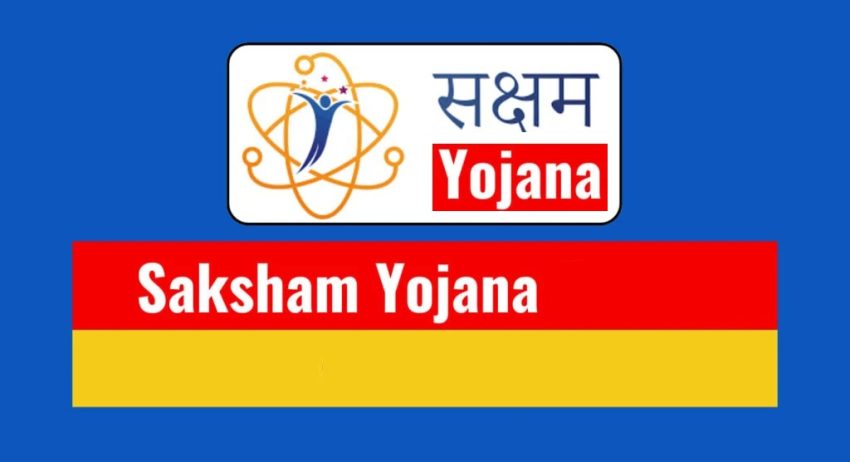In an economy as diverse and populous as India, the challenge of unemployment, particularly among the educated youth, is both a persistent and complex issue. As the nation continues to progress on its path to becoming a global powerhouse, initiatives to empower the youth with employable skills have become imperative. Enter Saksham Yojana, a government initiative lauded for its potential to bridge the glaring gap between education and employment.
Saksham Yojana is designed to provide skill development and employment opportunities to young graduates. It targets the youth who have completed their formal education but face difficulties in securing suitable employment. Through this scheme, young individuals are equipped with specialized skills, tailored training sessions, and real-world experience, making them more marketable to employers.
The Vision and Goals of Saksham Yojana
Launched under the broader umbrella of India’s skill development programs, Saksham Yojana aims to address several core issues:
- Bridge Skill Gaps: Academic education often falls short when it comes to practical skills. By integrating vocational training with academic knowledge, Saksham Yojana helps in creating a workforce that is ready for industry challenges.
- Enhance Employability: With industries complaining about a lack of skilled labor and graduates struggling to find jobs, the scheme works on enhancing the employability quotient of the youth.
- Promote Entrepreneurship: By fostering an environment of skill-based learning, the program encourages self-employment and entrepreneurial ventures, thereby boosting economic growth and innovation.
The Mechanism: An Integrated Approach
The operation of Saksham Yojana is anchored in a three-pronged approach:
- Training: Collaborating with various industrial sectors, educational institutions, and vocational training providers, Saksham Yojana structures specialized training modules that align with market needs. The curriculum emphasizes practical skills and hands-on learning experiences.
- Internships and Apprenticeships: Understanding that real-world exposure is irreplaceable, the initiative facilitates internships and apprenticeships with partnering companies. This not only allows participants to apply their skills but also gives employers a chance to gauge potential future hires.
- Placement Support: Recognizing the challenges faced by fresh graduates, the scheme offers robust placement support. Through job fairs, campus placements, and collaboration with industries, Saksham Yojana ensures a seamless transition from education to employment.
Collaboration and Implementation
Harnessing the potential of public-private partnerships (PPPs), Saksham Yojana involves collaboration with industries across sectors such as IT, manufacturing, healthcare, and retail. This ensures that the training provided is relevant and comprehensive. Moreover, the program’s implementation is decentralized, allowing state governments and local authorities to tailor it to their specific demographic and industrial needs.
Financial Implications and Benefits
The financial commitment towards Saksham Yojana reflects its importance in India’s developmental agenda. Investment in training modules, infrastructure, and partnerships often involves substantial funds. However, the return on investment is multifaceted – it not only transitions a greater number of educated individuals into gainfully employed resources but also boosts economic productivity and reduces dependency burdens.
For instance, consider that training a single youth through Saksham Yojana costs an average of ₹30,000, inclusive of resources, faculty, and internship placements. If the scheme successfully transitions even 70% of participants into employment with an average starting salary of ₹25,000 per month, the economic benefits are visible. Over a year, this translates to ₹3,00,000 in earnings per individual, significantly higher than the training costs, representing a tangible economic uplift.
Challenges and Criticisms
While the Saksham Yojana holds immense promise, it is not without its challenges. Critics argue about its reach and efficacy, pointing out that rural areas often lack the infrastructure to benefit from such schemes. Additionally, there are concerns about the quality and real-world applicability of the training modules.
Ensuring the inclusivity of marginalized groups, particularly those benefitting from schemes like the Indira Gandhi National Old Age Pension Scheme (IGNOAPS), remains an area needing attention. By incorporating people who might be guardians or breadwinners of IGNOAPS beneficiaries, Saksham Yojana could potentially enhance the socio-economic standards of households reliant on government assistance.
Conclusion
Saksham Yojana emerges as a beacon of hope for the young graduates of India, poised at the juncture between education and employment. By focusing on skill development, real-world experience, and guided interventions, it aims to create a more competent and job-ready workforce. While the journey is fraught with challenges and criticisms, the initiative stands as a testament to India’s commitment to harnessing its demographic dividend.
As with any financial or educational investment, careful consideration and informed decision-making are advised. The potential employment opportunities and economic benefits from such a scheme are vast, but participants and stakeholders must assess all aspects, ensuring the journey from education to employment is not just seamless, but also sustainable and rewarding.
Summary: Saksham Yojana: Bridging the Gap Between Education & Employment
Saksham Yojana is a transformative initiative aimed at addressing the disconnection between academic education and employment in India. Targeting young graduates, the program focuses on bridging skill gaps through structured vocational training, internships, and placement support. Collaborating with industry leaders, it ensures that the training aligns with market demands, enhancing employability and promoting entrepreneurship among the youth.
In financial terms, the scheme proves beneficial both for individuals and the broader economy. With a training cost of approximately ₹30,000 per participant and potential annual earnings of ₹3,00,000 upon employment, the scheme not only promises personal economic benefits but also a favorable return on investment for the nation.
Despite its promise, Saksham Yojana is not without challenges, particularly regarding reach and inclusivity. Ensuring marginalized sections, including those linked to initiatives like IGNOAPS, benefit from such programs remains crucial. The initiative reflects India’s strategic move towards capitalizing on its demographic dividend, fostering a future-ready workforce.
Disclaimer: The information provided is for educational purposes and should be independently verified. Investors must meticulously evaluate all pros and cons before engaging in any financial pursuits within the Indian market.

